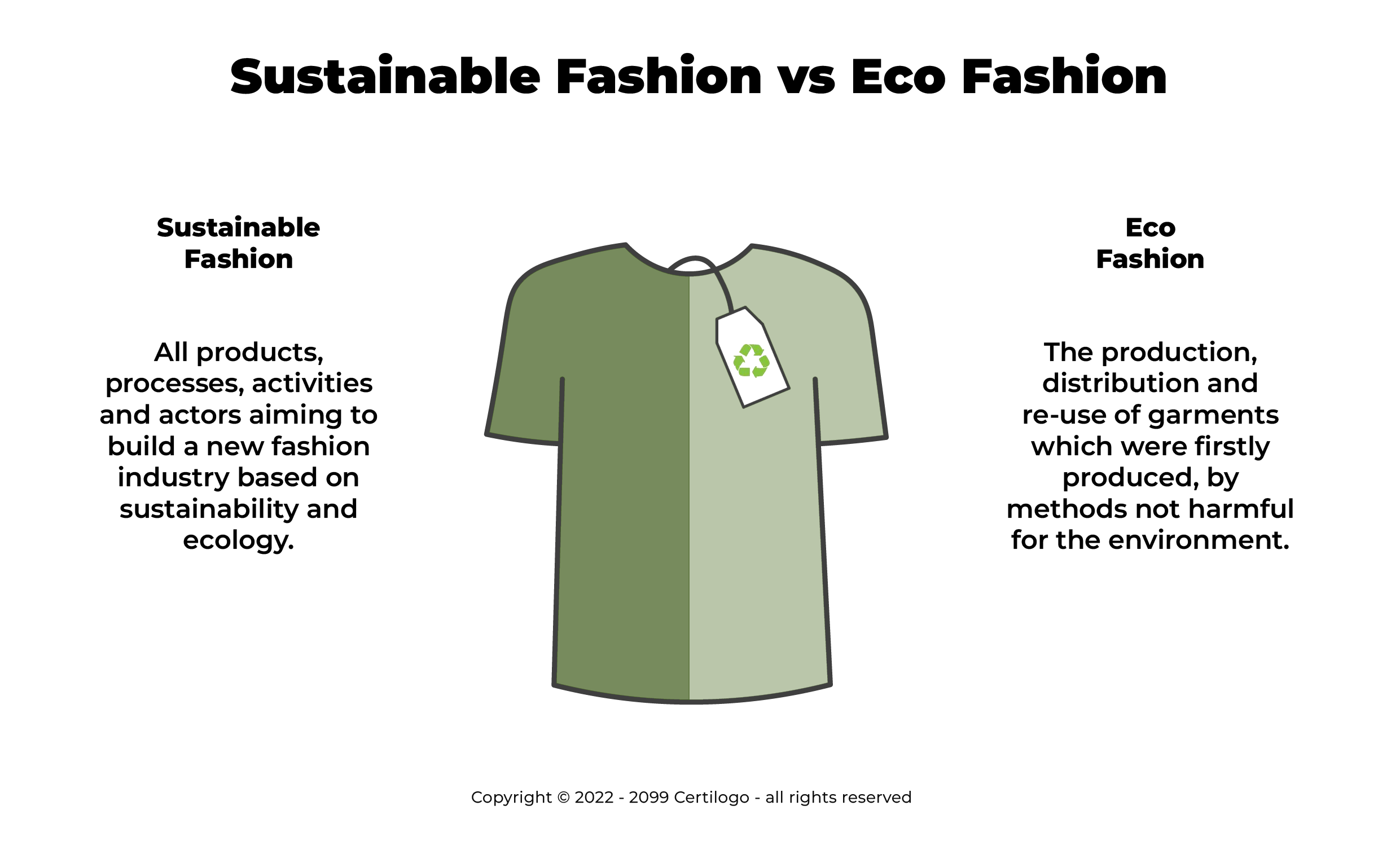The Potential Future of Cape Town Sustainable Fashion in the Global Market
The Potential Future of Cape Town Sustainable Fashion in the Global Market
Blog Article
Keep Ahead of the Contour by Exploring Ingenious Fashion Trends
In a market as dynamic as fashion, staying ahead includes more than just complying with present patterns-- it requires an exploration of technology. Smart textiles, as an example, are transforming garments into useful work of arts, while 3D printing is changing layout procedures with its adjustable, waste-reducing abilities. As sustainability ends up being a foundation, technologies like environmentally friendly products and circular fashion practices are improving environmental responsibility - Cape Town Sustainable Fashion. Additionally, the convergence of modern technology and style advertises a new era of customer interaction. How, after that, can these arising patterns redefine the future of fashion, and what effects do they hold for brand names seeking to flourish in this developing landscape?

Welcoming Smart Textiles
Over the last few years, the fashion business has seen a transformative change with the assimilation of smart textiles, an innovative technology that blends technology with fabric. This development represents not just a combination of visual appeals and performance however likewise a considerable jump in the direction of sustainability and personalization in vogue. Smart textiles, also called e-textiles, embed sophisticated electronics such as sensors and conductive threads within the fabric, enabling garments to communicate with the wearer or the environment.
These fabrics are designed to monitor physical criteria, such as heart price or body temperature level, giving real-time wellness analytics. Past health and wellness applications, wise textiles are likewise being used for adaptive clothing, which can transform shade or pattern in action to environmental stimuli, thus offering a dynamic style experience.
In addition, the growth of energy-harvesting fabrics that produce power from motion or sunlight is leading the means for self-dependent wearable innovation. This technology is interesting ecologically aware customers and designers aiming to reduce the ecological footprint of style. As r & d in this field advance, smart textiles are expected to end up being significantly common, reshaping the landscape of modern fashion with their multifunctional abilities.
The Increase of 3D Printing
Reinventing the production landscape, 3D printing has emerged as a game-changer in the style sector. This sophisticated innovation has actually made it possible for developers to press the limits of imagination, generating detailed and personalized garments that were formerly unimaginable. By leveraging electronic style and additive manufacturing, 3D printing promotes the production of complicated geometries and patterns, enabling developers to explore new appearances and structures.
A notable benefit of 3D printing in style is its ability to create on-demand, minimizing waste and minimizing inventory requirements. This efficiency not just maximizes production processes but likewise permits for rapid prototyping, allowing developers to bring their visions to life in a much shorter timeframe. Additionally, 3D printing sustains modification somewhat unrivaled by standard approaches, offering one-of-a-kind designs and customized fits tailored to private customer choices.
The surge of 3D printing has also democratized fashion, making it easily accessible to arising developers who can now fabricate top notch items without significant financial investment in traditional manufacturing facilities. As innovation remains to development, the garment industry is poised to harness the full capacity of 3D printing, checking out new products and techniques that will unquestionably redefine just how style is conceived and generated.
Lasting Style Technologies
As the apparel industry comes to grips with journalism need for ecological obligation, sustainable style technologies have actually emerged at the forefront of transformative change. The expanding understanding of environmental impact has actually sustained a shift in the direction of even more eco-conscious methods and materials. Designers and brand names are now focusing on sustainability, including approaches that decrease waste and lower carbon impacts.
One considerable advancement is the increase of round style, which emphasizes recycling and upcycling to extend the lifecycle of garments. This method not only reduces waste but also encourages customers to embrace a much more mindful approach to clothing consumption. Furthermore, using lasting products, such as natural cotton, hemp, and recycled polyester, has actually gained traction. These materials need less water and energy during manufacturing, significantly reducing environmental impact.
One more innovation exists in the fostering of ingenious dyeing strategies that use all-natural dyes or waterless procedures, thus minimizing the huge amounts of water and chemicals commonly made use of in fabric dyeing. go to my blog Additionally, developments in biotechnology have caused the production of lab-grown natural leather and materials, using cruelty-free and ecologically pleasant choices to conventional products. Via these pioneering efforts, the garment industry is making purposeful strides in the direction of a much more lasting future.

Tech-Integrated Clothing
Tech-integrated clothing represents a revolutionary blend of style and modern technology, improving just how individuals communicate with their clothing. This cutting-edge domain name is noted by the inclusion of wise fabrics and embedded digital elements, improving both capability and visual charm. From physical fitness trackers embedded in sportswear to heated coats managed using smart device applications, tech-integrated apparel uses consumers extraordinary ease and adaptability.
Introducing brands are driving this trend, focusing on producing garments that reply to environmental stimulations or user commands. As an example, some garments can alter shade or pattern in feedback to temperature level changes, while others incorporate biometric sensors to keep track of health and wellness metrics like heart rate or stress levels. The smooth assimilation of modern technology right into fabrics likewise encompasses environmental sustainability, with initiatives to create self-cleaning materials or garments that change to weather problems, hence decreasing the requirement for several layers.
Furthermore, the advent of wearable modern technology is not simply limited to clothing but reaches devices like watches and eyeglasses, further widening the range of tech-integrated fashion. As the sector continues to innovate, the possibility for modification and personalization in apparel expands, providing consumers one-of-a-kind, tech-enhanced fashion experiences that accommodate their private needs and preferences.
Future of Virtual Fashion
Over the last few years, the future of online style has arised as a transformative force within the sector, leveraging innovations in digital modern technology to redefine just how fashion is developed, experienced, and consumed. By incorporating augmented fact (AR), virtual fact (VR), and 3D layout tools, developers can now craft interactive and immersive experiences useful reference that transcend typical fashion borders. Virtual fashion allows for the development of garments that exist only in electronic settings, offering limitless possibilities for development without the limitations of physical production.
This digital change not just presents chances for innovative expression but also addresses sustainability worries integral in conventional style practices. Cape Town Sustainable Fashion. By getting rid of the demand for physical sources, virtual fashion lowers waste and reduces carbon footprints. Furthermore, the rise of online style straightens with the increasing consumer demand for special and individualized experiences, as digital garments can be tailored and tailored to individual preferences with simplicity

Verdict
The fashion business's future depend on the integration of innovative modern technologies and lasting techniques - Cape Town Sustainable Fashion. Smart fabrics and tech-integrated apparel are enhancing functionality, while 3D printing provides possibilities for personalization and waste reduction. Sustainable style, with round methods and environmentally friendly products, shows a dedication to environmental stewardship. In addition, virtual style is positioned to redefine consumer communications. Adapting to these patterns is essential for brands seeking to remain appropriate and competitive in this quickly evolving landscape.
In recent years, the fashion market has experienced a transformative change with the integration of smart textiles, a sophisticated innovation that blends innovation with material.As the style industry grapples with the pressing requirement for ecological duty, lasting style innovations have emerged at the forefront of transformative modification.In recent years, the future of online style has actually emerged as a transformative force within the market, leveraging innovations in electronic modern technology to redefine just how style is developed, experienced, and consumed. The rise of virtual style straightens with the raising customer need for one-of-a-kind and personalized experiences, as digital garments can be personalized and tailored to private preferences with ease.
The style sector's future lies in the combination of lasting methods and innovative technologies.
Report this page